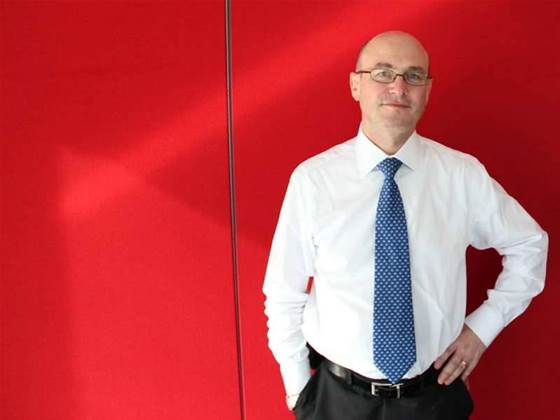Westpac has credited an agile, ‘incubator’-style application development process at the bank for improving its speed to market with new mobile offerings.

According to chief information officer Clive Whincup, an in-house team of about 50 developers has been tasked with building internal and customer apps for all Westpac Group brands.
Whincup said Westpac’s mobile strategy comprised “a lot of smaller things rather than a big new single initiative”, in contrast to Commonwealth Bank’s contactless Kaching app, which leveraged a $1.1 billion platform overhaul.
“We’re casting the net fairly broadly,” he said. “We’re looking at a number of initiatives; we expect some of them to become quite popular and some of them may not catch on.
“It’s kind of an incubator-type of approach. The business and technology teams work together in an iterative and very close way to explore and prototype solutions.
“We believe that is the key to getting real traction and innovative products.”
Although Whincup noted that it was easier and quicker to deliver mobile web applications, he asserted that small, device-specific features could be critical to winning users over.
With more than a million active mobile banking users, he said the company had decided to keep its mobile app development team in-house to get the most out of relationships between technical staff, business groups and customers.
The team sprang from subsidiary St.George, which has built up an internal app development capability since launching an iPad offering two years ago.
“We don’t feel that we can get that level of intimacy with a more industrialised model where we ship things off to be developed,” Whincup said, separating the app strategy from the bank's moves to outsource other IT requirements.
“And we want it to be a core capability, so we’re developing [mobile apps] as a core competency within technology.”
About 80 to 90 percent of the Westpac Group’s mobile offerings are designed to be common across its brands, including St.George, Bank of Melbourne and BT.
In recent months, Westpac has introduced customer-facing mobile banking and payment apps, an iPad “mortgage broker toolkit” and a custom document management app for its board of directors.
Westpac told journalists this week that its board had gone paperless by adopting the ‘Tabula’ iPad app, which was delivered iteratively over a period of 12 months.
Using Tabula, board members could access, annotate, print and highlight encrypted Microsoft Word, Excel and PowerPoint documents that were stored in a secure repository.
Beyond SIP
Westpac’s online and mobile application development is underpinned by the “Online Transformation Program” arm of its five-year, $2 billion Strategic Investment Priorities (SIP) program.
The SIP program is due to conclude in 2014 but Whincup said mobility would be a theme of Westpac’s technology investments going forward.
“We’re about 70 percent of the way though our SIPs program,” he noted.
“As you can expect, we’re starting to look at a refresh of that strategy and where the next steps are going to be.”
Westpac chief technology officer Jeff Jacobs highlighted mobile devices and payments, connectivity, big data and analytics, video, and social media as key areas of focus currently.
Earlier this year, iTnews revealed that Westpac had halted a number of end-user computing projects due to funding difficulties.
Whincup said the Group would complete those projects but had yet to determine a new timeline.
Executives from Westpac’s ‘big four’ banking competitors have flagged competition from technology companies – such as Google, Apple, Facebook and PayPal – as a key challenge in recent years.
Whincup noted that there was “overlap” between the offerings of those companies and those from Australian banks, but any such competition was “a healthy thing”.
“PayPal has done interpersonal payments for many years now. It’s not a bank, it doesn’t seem interested in becoming a bank,” he said.
“What these [technology] companies are really good at, and what we have applied [at Westpac], is this experimental approach to development.
“For many years, Google Mail was in beta [with] hundreds of millions of people using it for their email.
“It’s a mindset shift, a change of approach. What they do, instead of a big bang monster strategy is… go about testing the water or assessing where customer behaviour is heading.”


.png&h=140&w=231&c=1&s=0)
_(20).jpg&h=140&w=231&c=1&s=0)





_(26).jpg&w=100&c=1&s=0)

 iTnews Executive Retreat - Security Leaders Edition
iTnews Executive Retreat - Security Leaders Edition












_(1).jpg&h=140&w=231&c=1&s=0)



